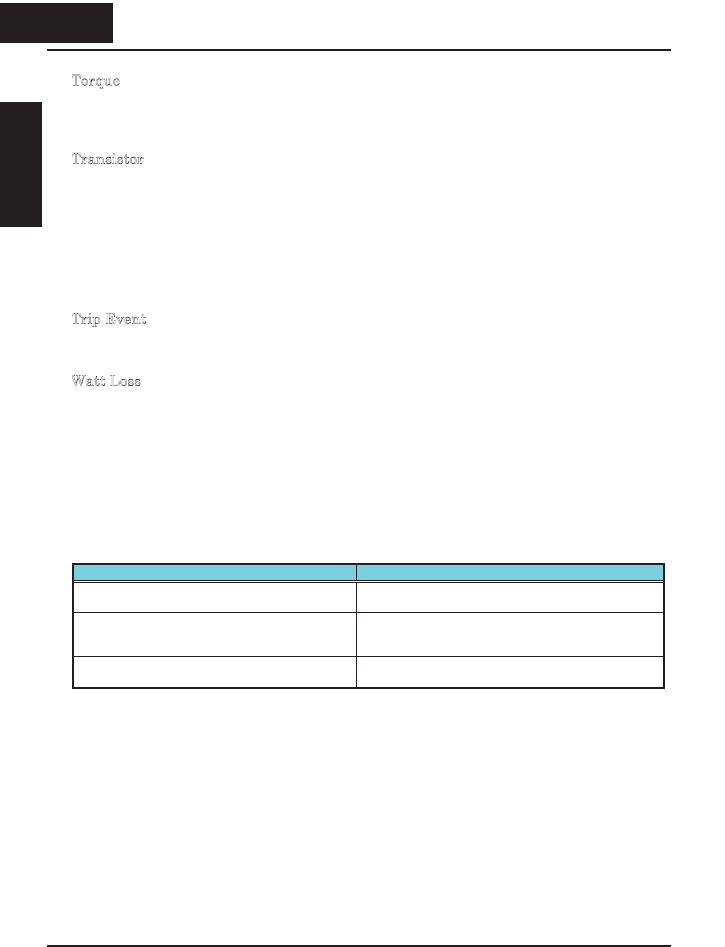
T
orque
The rotational force exerted by a motor shaft. The units of
measurement consist of the distance (radius from shaft center axis)
and force (weight) applied at that distance. Units are usually given as
pound-feet, ounce-inches, or Newton-meters.
T
ransistor
A solid state, three-terminal device that provides amplification of
signals and can be used for switching and control. While transistors
have a linear operating range, inverters use them as high-powered
switches. Recent developments in power semiconductors have
produced transistors capable of handling high voltages and currents,
all with high reliability. The saturation voltage has been decreasing,
resulting in less heat dissipation. Hitachi inverters use state-of-the-
art semiconductors to provide high performance and reliability in a
compact package. See also
IGBT
and
Saturation Voltage
.
T
rip Event
An event that causes the inverter to stop operation is called a “trip”
event (as in
tripping
a circuit breaker). The inverter keeps a history
log of trip events. They also require an action to clear.
W
att Loss
A measure of the internal power loss of a component, the difference
between the power it consumes and what its output delivers. An
inverter’s watt loss is the input power minus the power delivered to
the motor. The watt loss is typically highest when an inverter is
delivering its maximum output. Therefore, watt loss is usually
specified for a particular output level. Inverter watt loss
specifications are important when designing enclosures.
Bibliography
Title Author and Publisher
Variable Speed Drive Fundamentals, 2nd Ed. Phipps, Clarence A.
The Fairmont Press, Inc. / Prentice-Hall, Inc. 1997
Electronic Variable Speed Drives Brumbach, Michael E.
Delmar Publishers 1997
ISBN 0-8273-6937-9
Hitachi Inverter Technical Guide Book Published by Hitachi, Ltd. Japan 1995
Publication SIG-E002
A8
Appendix A
A 8
Appendix A


















